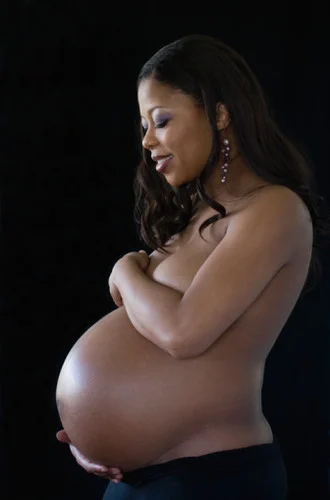A night out was overdue—it was our first date night since welcoming our newest family member just 12 days earlier. After a delightful dinner, we decided to swing by the store to grab some essentials for our little one, who was soundly asleep in his car seat, while the other five kids were hopefully resting at home with our babysitter.
As we approached the checkout, a woman joined the line, her grandbaby happily babbling in the cart. Her husband stood behind her, and as I lifted the car seat cover to peek at my little guy, she exclaimed, “Oh my goodness! You have a brand new baby!”
“Yes, ma’am,” I replied politely, while my husband was busy paying. I turned to place our bags in the cart, and that’s when her husband chimed in, “Looks like she’s got another one on the way!” He was clearly thrilled with his observation.
I swear I heard the woman mumble, “Uh-oh,” as my husband and I struggled to contain our laughter. We made it all the way to the exit before erupting into giggles on our way home.
The next day, 13 days postpartum, we took our car for an oil change at a place my husband frequents, where you can relax in your vehicle while they work. The attendant, familiar with my husband but not with me, casually remarked, “See you soon, man,” and then added, “Not you, I guess. I’ll see you after.”
My husband rolled up the window quickly, and I fought to stifle my laughter. Finally, he asked what we were all thinking: “After what?” Some men really just don’t get it.
But let’s not let the men off the hook entirely. I still remember a woman we met at the park just a week after I gave birth to twins three years ago. The twins were born prematurely, requiring time in the neonatal intensive care unit (NICU), so we took our other boys to the park to let off some steam.
As the kids were playing, a fellow mom approached. After chatting about my all-boy household, she pointed at my postpartum belly and asked, “Is this one a girl?”
“Oh, no,” I replied, laughing to myself at the impending awkwardness. “I just had twin boys six days ago. They’re in the NICU right now.” She nodded as if she understood, but then asked, “So, when are they due?”
I had to explain again, and she quickly apologized before whisking her son away.
Years ago, when my first child was born, and I was still grappling with body image issues, moments like these would have stung. But now, I recognize the beauty of what a woman’s body goes through during pregnancy. The truth is, after carrying a baby for nine months, your body doesn’t just snap back into shape overnight.
The uterus has nurtured and protected a new life, and it takes time to return to its pre-pregnancy state. That postpartum bump can linger for weeks, and it’s perfectly normal to still look a bit pregnant during this phase.
So when is it truly appropriate to assume a woman is expecting?
The answer is simple: it’s never a safe assumption.
However, if you’re feeling audacious, here are some mostly foolproof signs to look for:
- She isn’t accompanied by a newborn.
- She explicitly says she’s pregnant.
- She doesn’t mention having recently given birth.
And of course, there’s one final sign to consider:
- If her belly resembles an oversized basketball, she’s waddling, and it’s her due date, then you might be on the right track.
In every other situation, it’s best to keep your observations to yourself. Better to err on the side of caution.
If you want to learn more about pregnancy and related topics, check out this excellent resource for pregnancy and home insemination at Mount Sinai. And if you’re considering at-home insemination, Make A Mom is a reputable online retailer offering kits that could assist you on your journey.
For additional insights into navigating parenthood and fertility, you can explore one of our other blog posts here.
In summary, while it can be tempting to make assumptions about a woman’s body after childbirth, it’s essential to approach the topic with sensitivity and understanding. Every woman’s postpartum experience is unique, and patience is key.

Leave a Reply